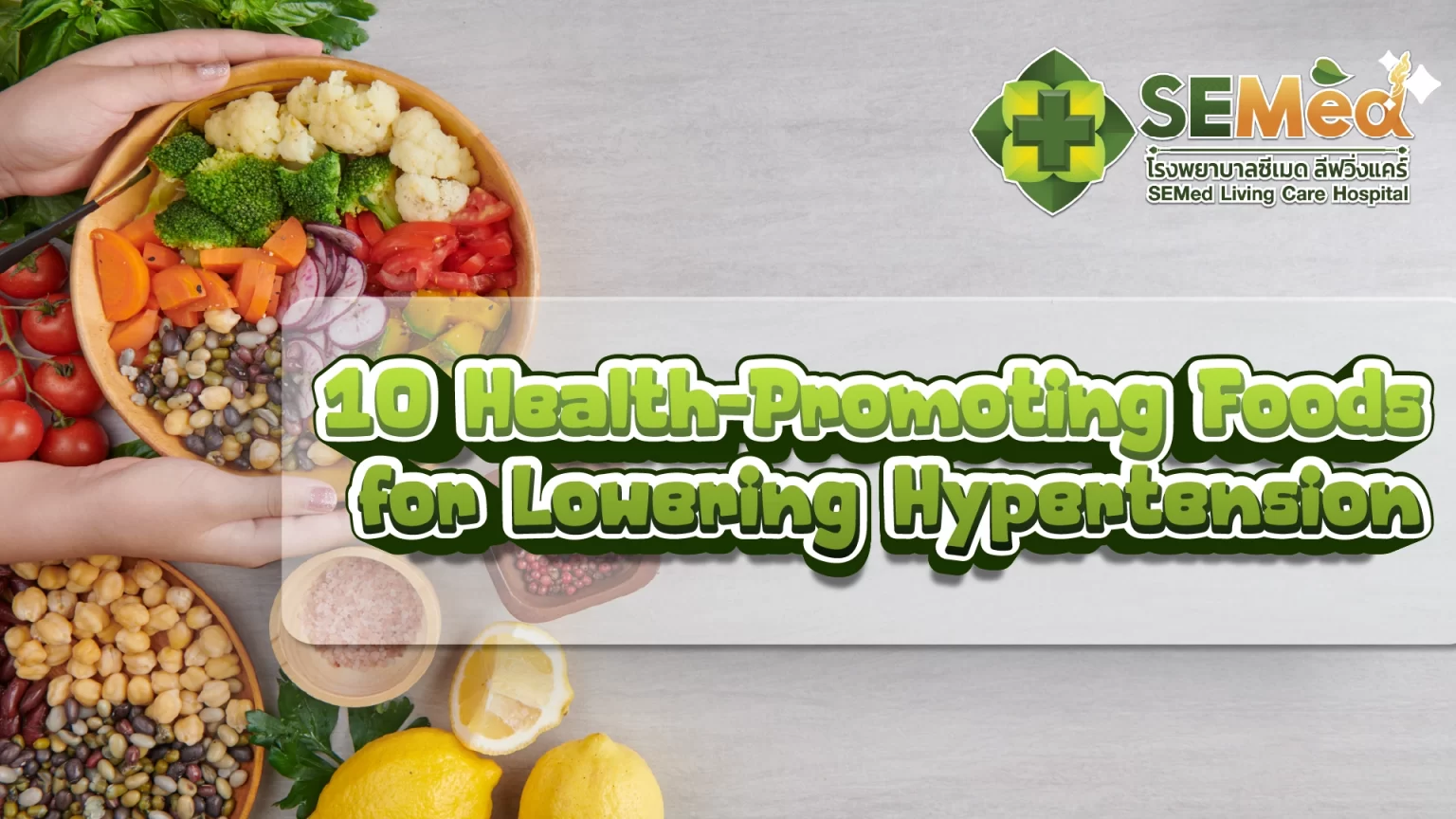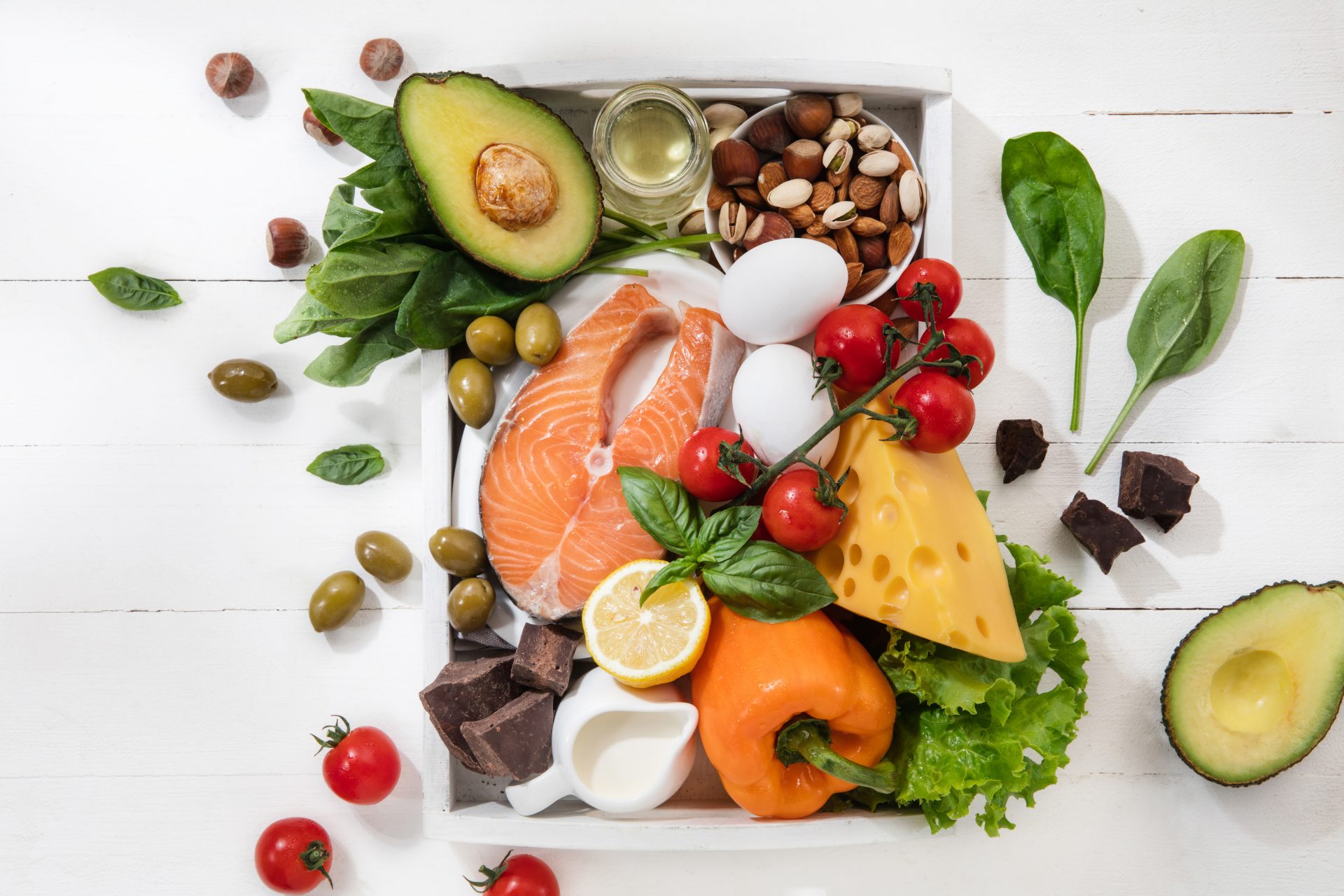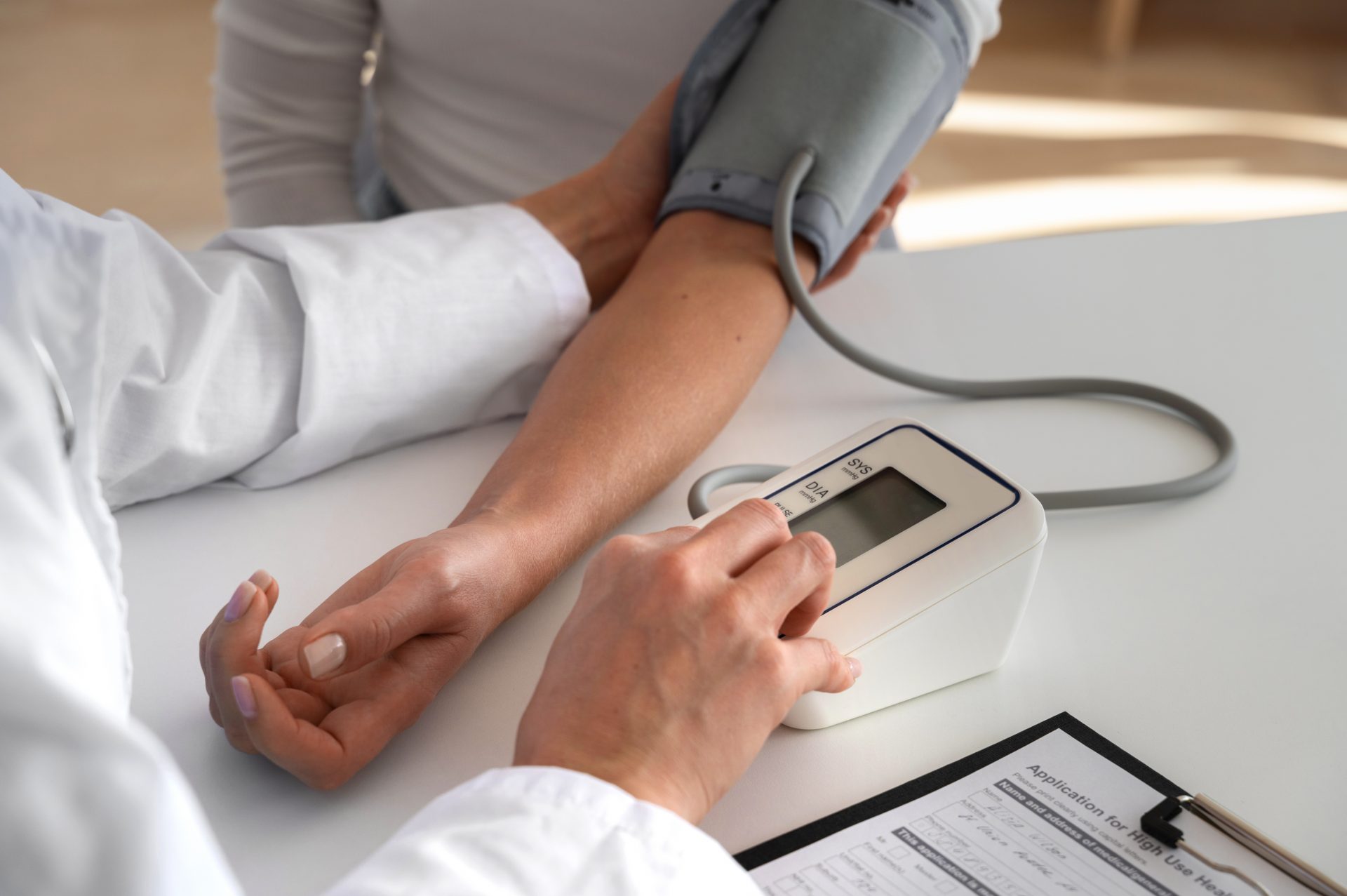
Hypertension: A Critical Health Concern
Hypertension, or high blood pressure, is a severe condition because early symptoms are often absent. Many individuals only realize they have high blood pressure after significant complications have arisen. High blood pressure is a widespread, chronic health issue globally and in Thailand, particularly as risk increases with age.
Understanding Hypertension
Hypertension occurs when blood pressure in the arteries rises due to the heart pumping blood throughout the body. Blood pressure is recorded as two values:
- Systolic Pressure: The pressure when the heart contracts.
- Diastolic Pressure: The pressure when the heart relaxes.
Hypertension is diagnosed when blood pressure consistently reaches or exceeds 140/90 mm Hg. This condition can lead to serious health complications, such as heart disease, stroke, and kidney failure.
Hypertension is especially prevalent in older adults and is considered a long-term illness that requires careful management. In Thailand, a large number of people are affected by high blood pressure, making dietary management particularly essential. Let’s examine how proper dietary habits can benefit those with hypertension.

Dietary Approaches to Reduce Hypertension (DASH Diet)
The DASH diet focuses on reducing sodium, saturated fats, total fats, and cholesterol, while increasing intake of fiber, protein, calcium, and essential minerals like potassium and magnesium, which studies have shown to help reduce blood pressure.
DASH Diet Recommendations for Daily Portions
- Whole Grains: 7-8 servings (about 7-8 portions) to boost fiber intake, aiding in digestion and helping prevent chronic diseases.
- Fruits and Vegetables: 4-5 servings each (approximately 4-5 cups of vegetables and 3 portions of fruits), providing essential fiber, vitamins, and minerals. Fresh produce is preferable over canned or processed options.
- Lean Protein, Especially Fish: 2-3 servings (about 4-6 tablespoons), prioritizing low-fat meats like skinless cuts and fish, which provides heart-healthy omega-3 fatty acids that help lower triglycerides and reduce inflammation.
- Fats and Oils: 2-3 servings (no more than 6 teaspoons). Although fats should be limited, healthy fats are important for absorbing fat-soluble vitamins and provide necessary fatty acids.
- Nuts and Seeds: Approximately 30 grams or 2 tablespoons daily, such as almonds or peanuts, for healthy fats. Since nuts are calorie-dense, it’s essential to manage portions.
To enhance flavor, use herbs and spices instead of high-sodium seasonings.
The DASH diet is recommended by the American Heart Association as a strategy for managing high blood pressure. Research, including a systematic review and meta-analysis with over 2000 participants, has demonstrated that following the DASH diet for 2-24 weeks significantly lowers blood pressure, total cholesterol, LDL cholesterol, and reduces the 10-year risk of heart disease by 13%.
10 Foods for Managing Hypertension with the DASH Diet
- Whole Grains: 7-8 servings of whole grains daily for added fiber and digestive health.
- Lean Meats: Low-fat meats such as lean red meat and fish rich in omega-3, which helps reduce triglycerides and inflammation.
- Fresh Fruits and Vegetables: 4-5 servings to boost fiber and mineral intake. Fresh options are recommended over processed or canned foods.
- Healthy Fats: Limit to 6 teaspoons daily to provide essential fatty acids and support vitamin absorption.
- Nuts and Seeds: Include options like almonds and peanuts, but limit to avoid excess calories.
- Hibiscus: Contains anthocyanins, which help strengthen blood vessels.
- Celery: Known for its diuretic and anti-inflammatory properties, which help regulate blood pressure.
- Garlic: Contains allicin, known to lower blood pressure and cholesterol.
- Lemongrass: Aids in diuresis, relaxation, and blood pressure reduction.
- Andrographis: Known for expanding blood vessels and lowering heart rate, which aids in controlling blood pressure.

7 Lifestyle Adjustments for Managing Hypertension in Older Adults
Guidelines for managing hypertension in older adults through lifestyle adjustments include:
- Maintain a Healthy Weight.
- Regular Physical Activity: At least 30 minutes daily, 5 days a week.
- Limit Sodium Intake: Keep sodium under 2300 mg per day to aid blood pressure control.
- Adopt the DASH Diet.
- Limit Alcohol Consumption.
- Quit Smoking: Although not directly linked to lowering blood pressure, quitting reduces cardiovascular risks.
- Reduce Stress: Manage anxiety and improve overall blood pressure.
In Summary
While diet is crucial for managing hypertension, long-term lifestyle changes—including proper nutrition and regular exercise—are essential for preventing and treating high blood pressure. Sustainable lifestyle changes serve as the cornerstone of hypertension prevention and effective management, enhancing the benefits of medication when needed.
Source : Mahidol University

